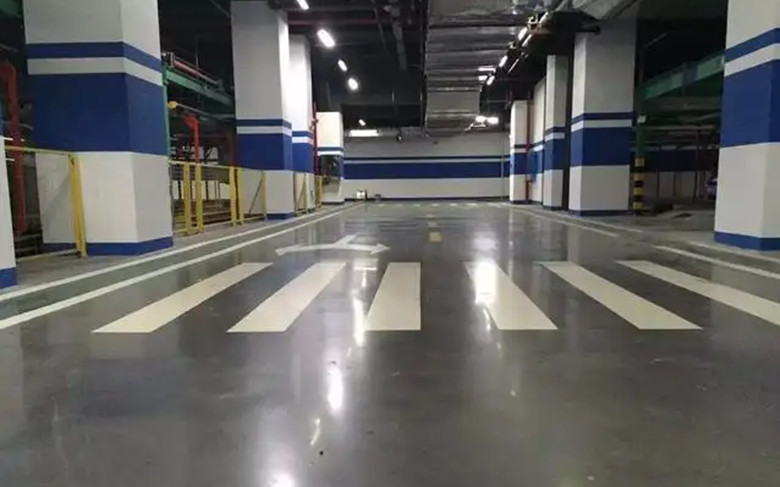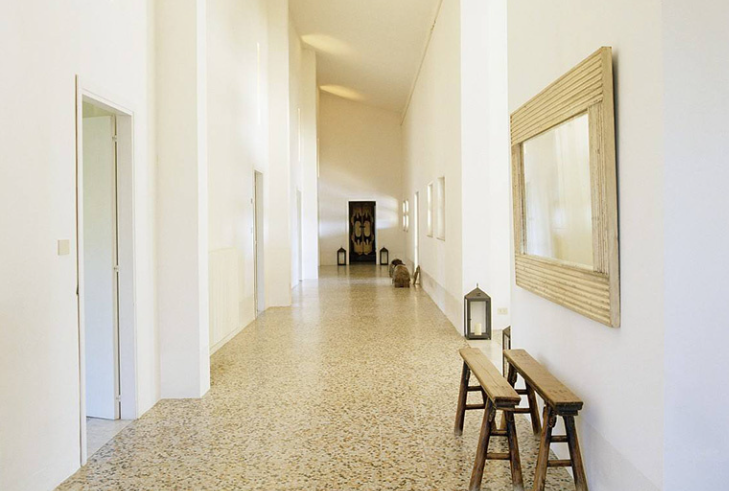What Is Polished Concrete?
Polished concrete refers to the concrete surface formed after the concrete is gradually polished by abrasive tools and combined with chemical hardeners. Constructors use chemical hardeners to penetrate the naturally poured concrete to strengthen its surface strength and density, and improve its flatness and reflectivity through mechanical grinding and polishing, so that the concrete floor has both performance and special decorative effects and it is suitable for commercial floors, such as restaurants, cafes, specialty stores, schools, shopping malls, upscale-offices private garages, etc.
1. Hardness: the Mohs hardness of the
ground treated with concrete sealing and curing agent will reach 9, and the
Mohs hardness will increase by 45.3%;
2. Wear resistance: The concrete sealing
and curing agent can solidify various components in the terrazzo into a hard
entity to increase the hardness and compactness. After the ground is cured with
the terrazzo floor concrete sealing and curing agent, the wear resistance will
be increased to 8 times above.
3. Dustproof of polished concrete floor:
The ground concrete sealing and curing agent reacts chemically with the
silicate in the terrazzo, which forms a dust-free and dense whole on the
concrete surface, which permanently controls the concrete dust precipitate from
the void surface .
4. Anti-skid: In general concrete floors,
saline-alkali components will precipitate from the surface, resulting in
slippage. But the concrete sealing and curing agent ground is different. It
forms a solid and dense whole on the concrete surface, and the salt and alkali
components will not be precipitated from the surface.
5. Compression resistance: The compressive strength of the treated sample is 27.3% higher than that of the untreated sample, and the flexural strength is increased by more than 3 times.
6. Impermeability: Concrete sealing, curing
and polishing concrete floor agent can effectively penetrate into the terrazzo,
and chemically react with it, lock the pores inside, and have a permanent
sealing effect on the concrete surface, which can effectively inhibit water,
oil and other of surface dirt into the concrete;
7. Weathering resistance: UV rays and water
spray have no adverse effect on the treated samples, and the concrete sealing
and curing agent can effectively prevent the passage of chloride ions. The test
shows that the treated floor will not be affected exposed in electromagnetic or
water mist.
8. Corrosion resistance: The ground treated
with concrete sealing and curing agent will greatly improve the corrosion
resistance of concrete.
9. Brightness: After the concrete surface is removed by grinding in the concrete polishing process, it can often better express the natural color of concrete. The concrete mixed with pre-mixed cement and specific or special stone aggregates (such as pebble, granite, black basalt or ore, waste stone, etc.), and then superfinely polished, can show more decorative effects. When the surface layer is poured, decorative aggregates such as shells, conch shells, glass fragments and even metal auto parts are embedded in it. The polished effect is very artistic and helps to realize the designer's various ideas.
Concrete floors can be polished by wet or dry grinding, but because dry polishing is faster, easier to operate, and more environmentally friendly, dry polishing is currently one of the most commonly used polishing methods in the industrial field. Wet polishing requires water to cool the diamond sander and remove abrasive debris from the machine. Since water acts like a lubricant to reduce friction, it can extend the life of your polisher. But the biggest disadvantage of wet polishing is that it produces a lot of mud. Dry polishing does not require water, and the floor polishing machine used for dry polishing is equipped with a dust collector, which can effectively absorb dust particles. Foreign advanced vacuuming equipment usually has three-stage filtering equipment and pulse backflushing device, which can filter out 99.9% of dust above 1 micron (PM1), and the collected dust can be used for brick making in brick factories or in mixing stations to replace fly ash for the production of concrete.
TransGrind Tools offer
a wide range of diamond tooling for polished concrete. If you
are working on a project for your polished concrete, our professional quality
concrete floor diamond tools help to make your polished concrete job more
efficient, easier and simpler. If you are interested in our products or have
any need of our products for your job, you can consult us for more detail
information.


Z0OB_%E5%89%AF%E6%9C%AC.jpg)


Comments
Post a Comment